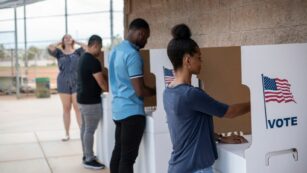In the ever-evolving landscape of democratic participation, voter mobilization stands as a critical force driving electoral engagement. It’s more than just getting individuals to the polls; it’s about inspiring and empowering citizens to exercise their democratic rights. As elections shape the future of communities and nations, understanding the nuances of voter mobilization becomes essential for anyone interested in the mechanics of democracy.
Voter mobilization encompasses a variety of strategies aimed at increasing voter turnout. From grassroots campaigns to digital outreach, these efforts seek to address barriers that might prevent individuals from voting. By harnessing the power of communication and community, voter mobilization initiatives strive to make the voting process accessible and engaging for all eligible citizens. As political landscapes shift, the importance of effective voter mobilization continues to grow, highlighting its role in shaping the democratic process.
What Is Voter Mobilization
Voter mobilization involves strategies to encourage citizens to participate actively in elections. It’s essential for promoting democratic engagement and ensuring diverse representation.
Early Efforts and Strategies
 Early voter mobilization efforts focused on direct interaction. Campaigns used door-to-door canvassing and phone banking to reach potential voters. These methods aimed to provide information and dispel myths about the voting process. Community leaders played crucial roles in building trust and encouraging voter turnout. As technology advanced, digital outreach became a significant aspect. Social media platforms and email campaigns emerged as effective tools for reaching broader audiences and engaging younger voters.
Early voter mobilization efforts focused on direct interaction. Campaigns used door-to-door canvassing and phone banking to reach potential voters. These methods aimed to provide information and dispel myths about the voting process. Community leaders played crucial roles in building trust and encouraging voter turnout. As technology advanced, digital outreach became a significant aspect. Social media platforms and email campaigns emerged as effective tools for reaching broader audiences and engaging younger voters.
Voter mobilization uses diverse strategies to engage and motivate citizens to participate in elections. Each method focuses on different aspects of outreach and engagement.
Grassroots Organizing
Grassroots organizing plays a critical role in voter mobilization by focusing on community-driven efforts. Local volunteers conduct door-to-door canvassing and host neighborhood meetings to engage directly with potential voters. Personal interactions build trust and foster a sense of community involvement. Organizations often partner with local leaders to amplify their message and tailor it to specific communities.
Digital Campaigns
Digital campaigns have transformed voter mobilization by leveraging technology to reach a broad audience. Social media platforms, email marketing, and targeted ads engage voters, especially younger demographics, by delivering tailored messages. These campaigns utilize data analytics to identify and reach potential voters, maximizing engagement and participation rates through personalized content.
Celebrity Endorsements
Celebrity endorsements bring visibility and influence to voter mobilization efforts. Celebrities use their platforms to raise awareness about voting, encourage registration, and motivate their fans to vote. Endorsements from well-known figures can especially boost voter turnout among specific demographics by adding an element of relatability and urgency to mobilization efforts.
Challenges in Voter Mobilization
Mobilizing voters encounters various hurdles that can impact the effectiveness of electoral engagement strategies.
Misinformation
 Misinformation poses a significant obstacle in voter mobilization efforts. Inaccurate information, like false voting dates or misleading candidate details, can confuse and deter potential voters. Online platforms often amplify these falsehoods, complicating efforts to dispel them. Combatting misinformation requires deploying fact-checking resources and consistent educational outreach to ensure voters receive accurate information. Campaigns must actively monitor digital channels to correct misinformation swiftly.
Misinformation poses a significant obstacle in voter mobilization efforts. Inaccurate information, like false voting dates or misleading candidate details, can confuse and deter potential voters. Online platforms often amplify these falsehoods, complicating efforts to dispel them. Combatting misinformation requires deploying fact-checking resources and consistent educational outreach to ensure voters receive accurate information. Campaigns must actively monitor digital channels to correct misinformation swiftly.
Effective voter mobilization demands strategic resource allocation. Organizations need to balance funding between grassroots initiatives, digital outreach, and other mobilization tactics. Insufficient resources can hinder efforts to reach key demographics, particularly in underserved or rural areas. Prioritizing investments in data-driven strategies helps identify areas with the highest potential impact. Optimal resource allocation can maximize voter turnout, even with limited budgets.
Case Studies of Successful Voter Mobilization
 Voter mobilization continues to play a pivotal role in shaping democratic landscapes worldwide. By examining successful case studies, it’s clear that strategic efforts can significantly impact electoral outcomes. The 2008 US presidential election serves as a prime example where grassroots and digital strategies led to unprecedented youth voter turnout. Similarly, local initiatives in various countries have demonstrated that community-driven efforts can overcome barriers and inspire civic participation. These examples underscore the importance of tailored approaches that resonate with diverse populations. As challenges like misinformation persist, the commitment to innovative and inclusive mobilization remains crucial for fostering robust democratic engagement.
Voter mobilization continues to play a pivotal role in shaping democratic landscapes worldwide. By examining successful case studies, it’s clear that strategic efforts can significantly impact electoral outcomes. The 2008 US presidential election serves as a prime example where grassroots and digital strategies led to unprecedented youth voter turnout. Similarly, local initiatives in various countries have demonstrated that community-driven efforts can overcome barriers and inspire civic participation. These examples underscore the importance of tailored approaches that resonate with diverse populations. As challenges like misinformation persist, the commitment to innovative and inclusive mobilization remains crucial for fostering robust democratic engagement.



